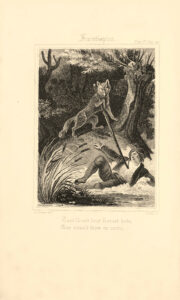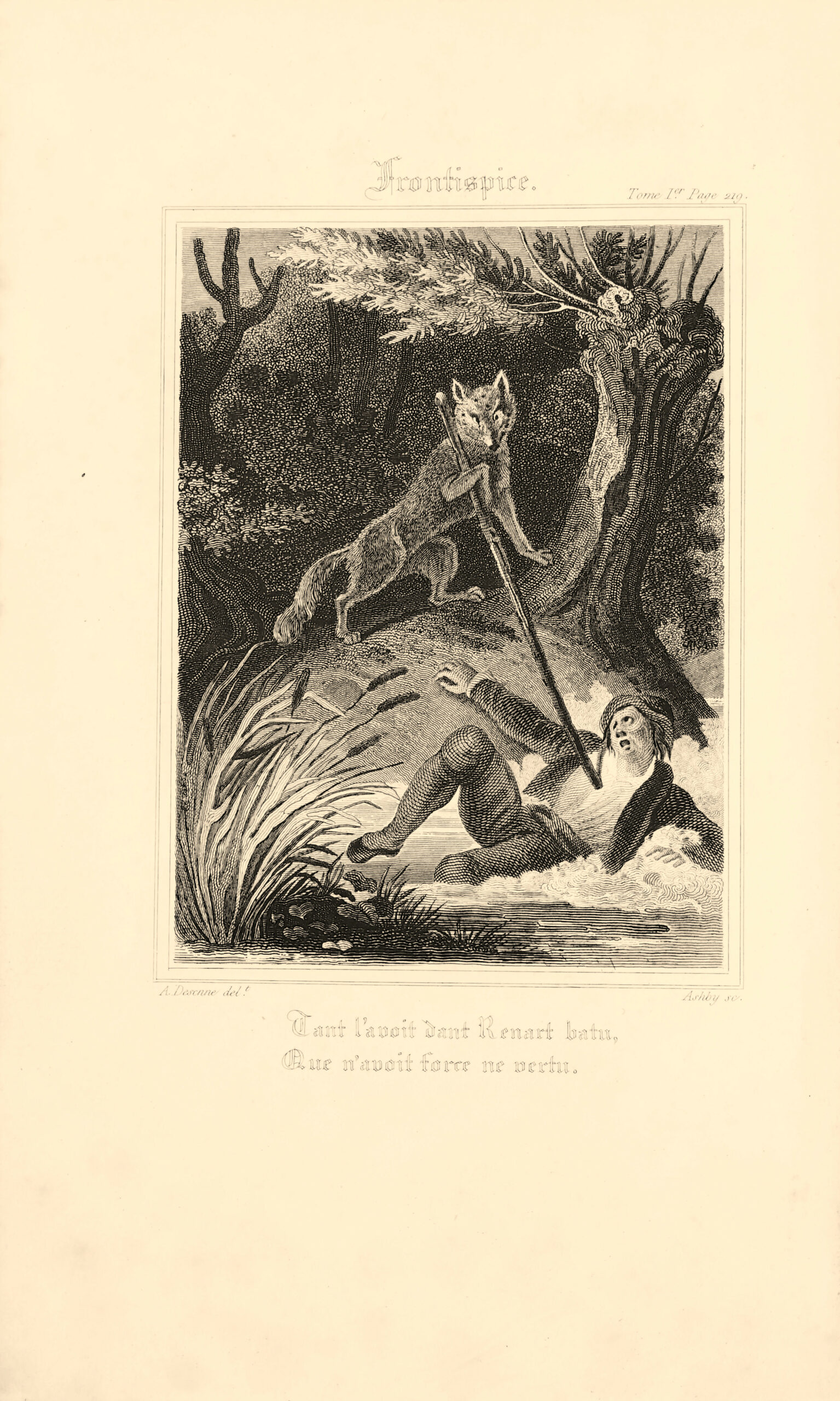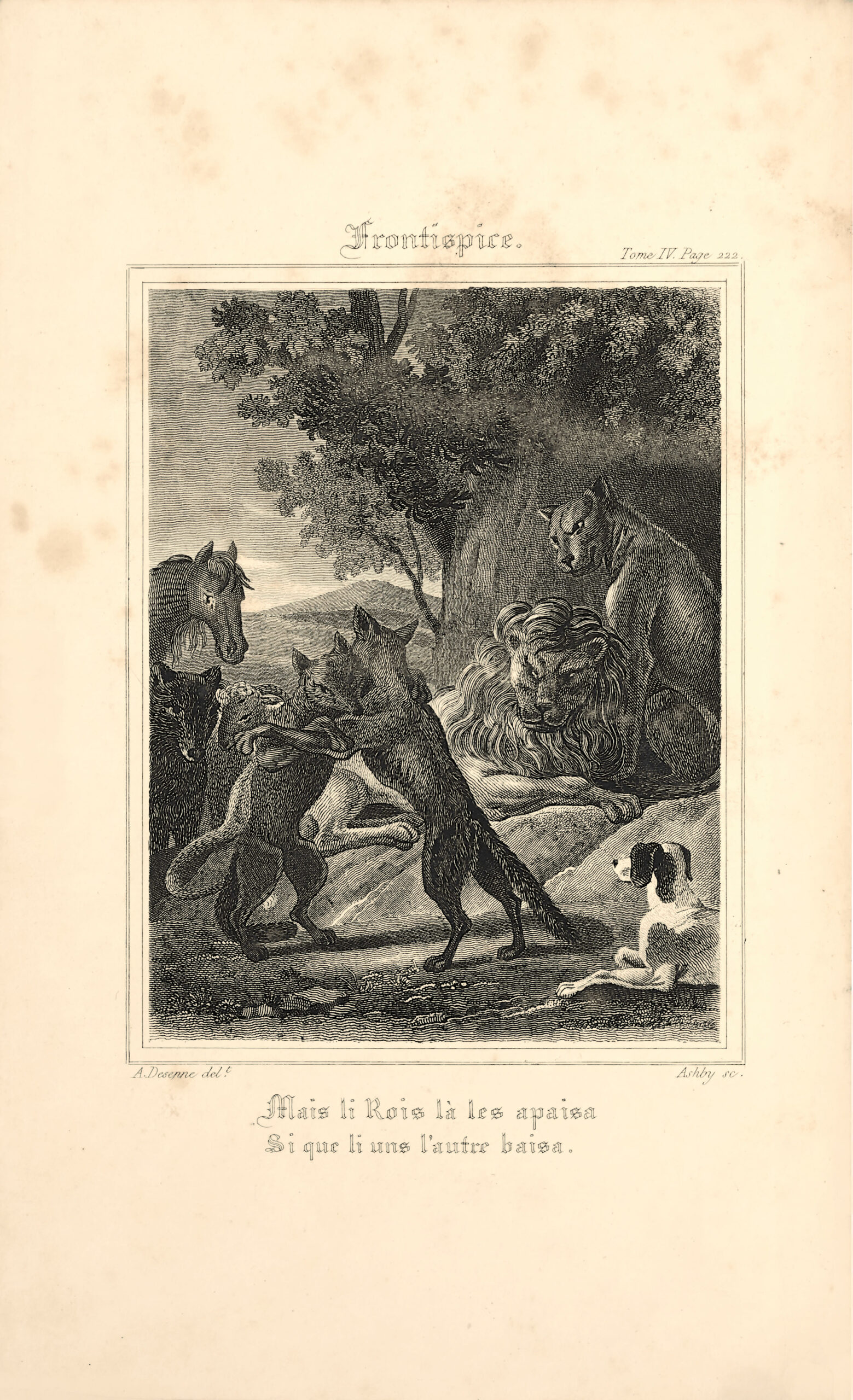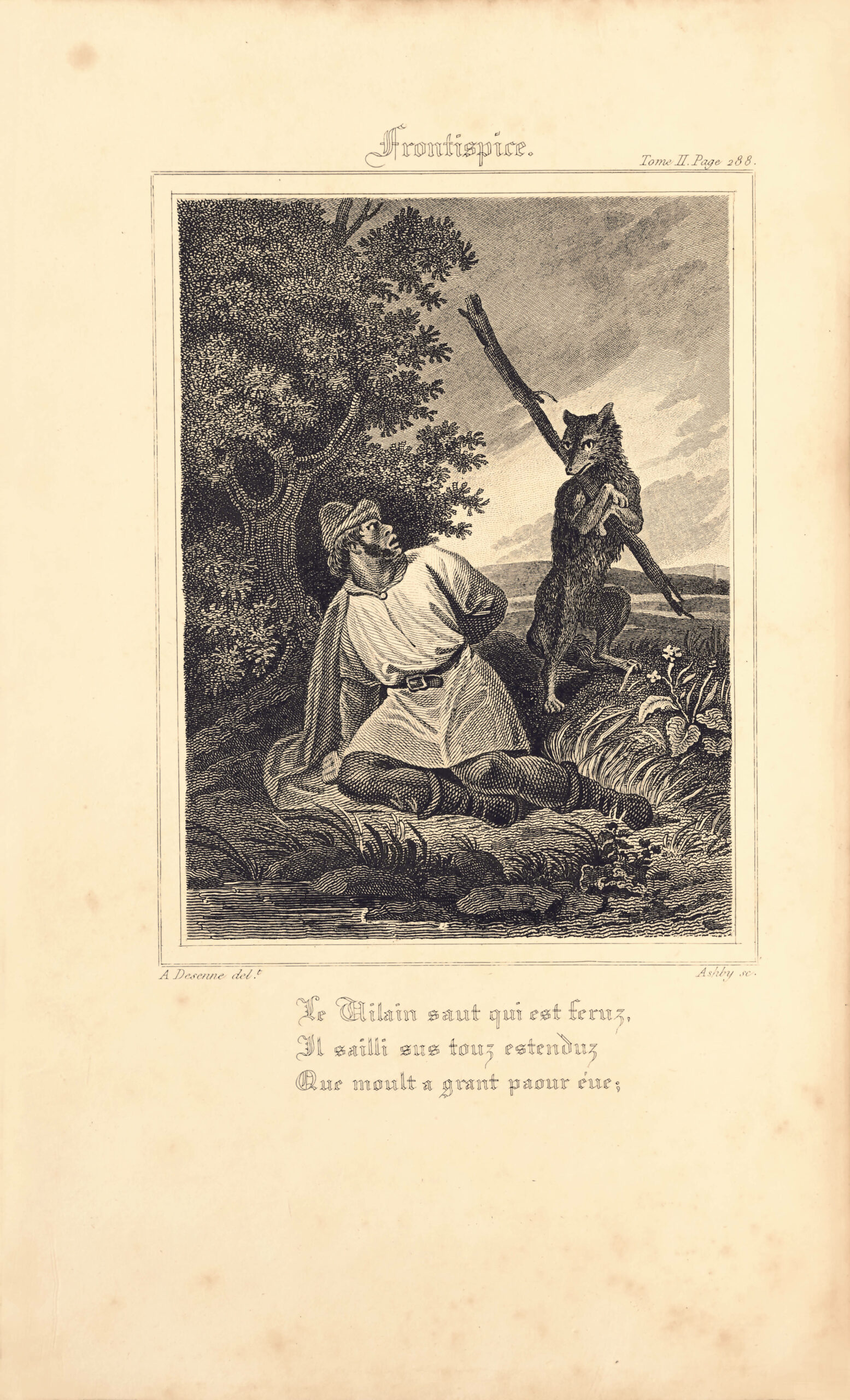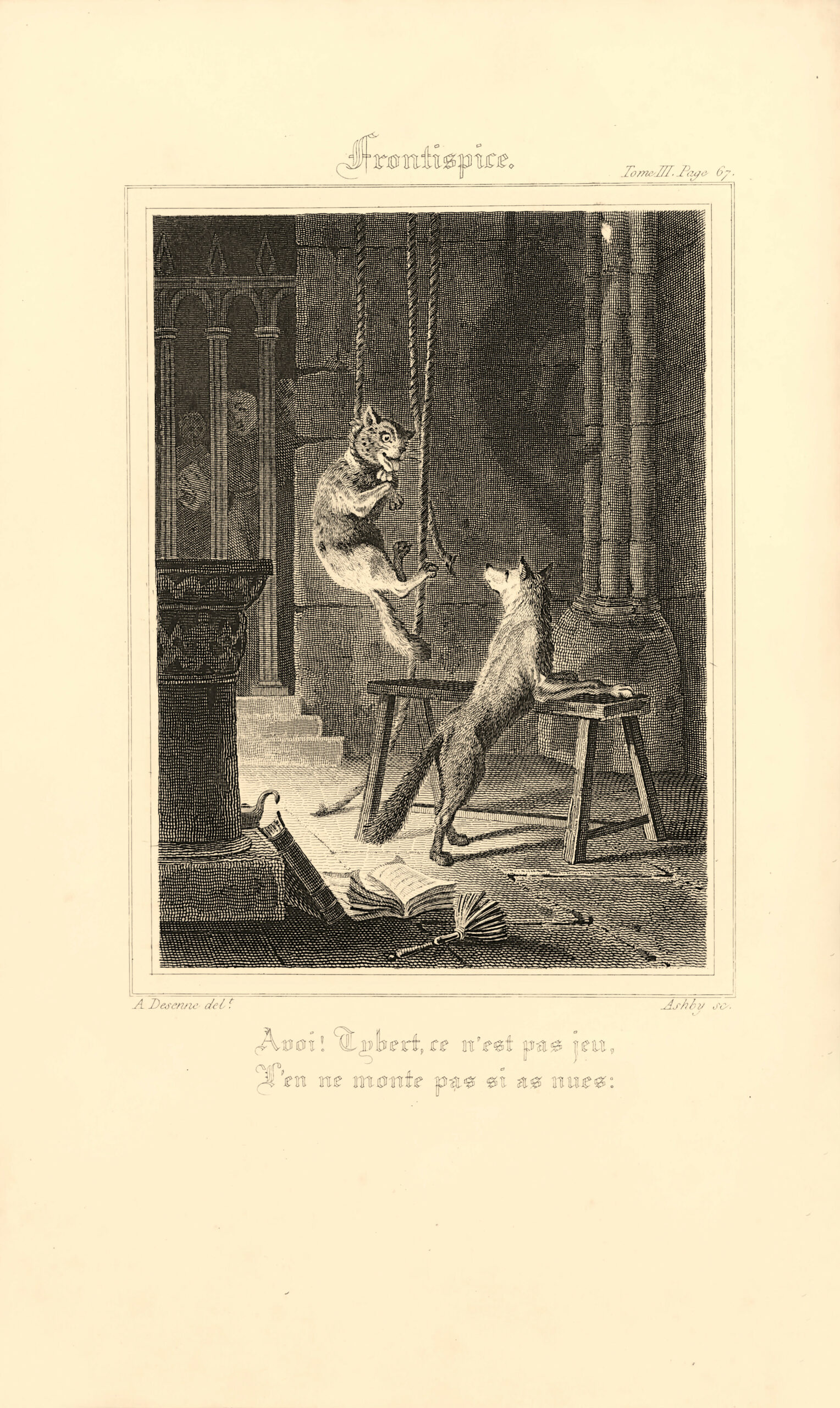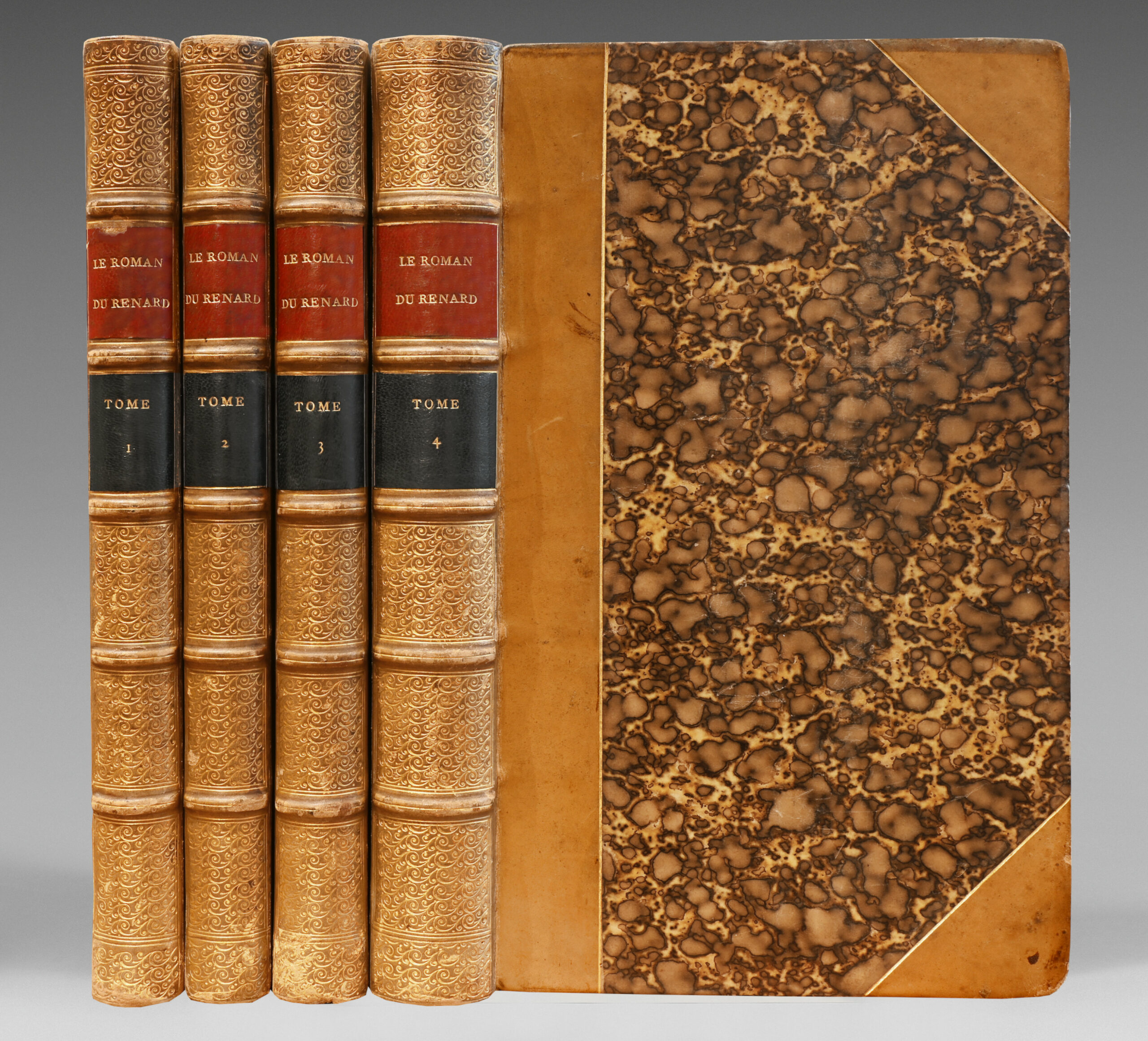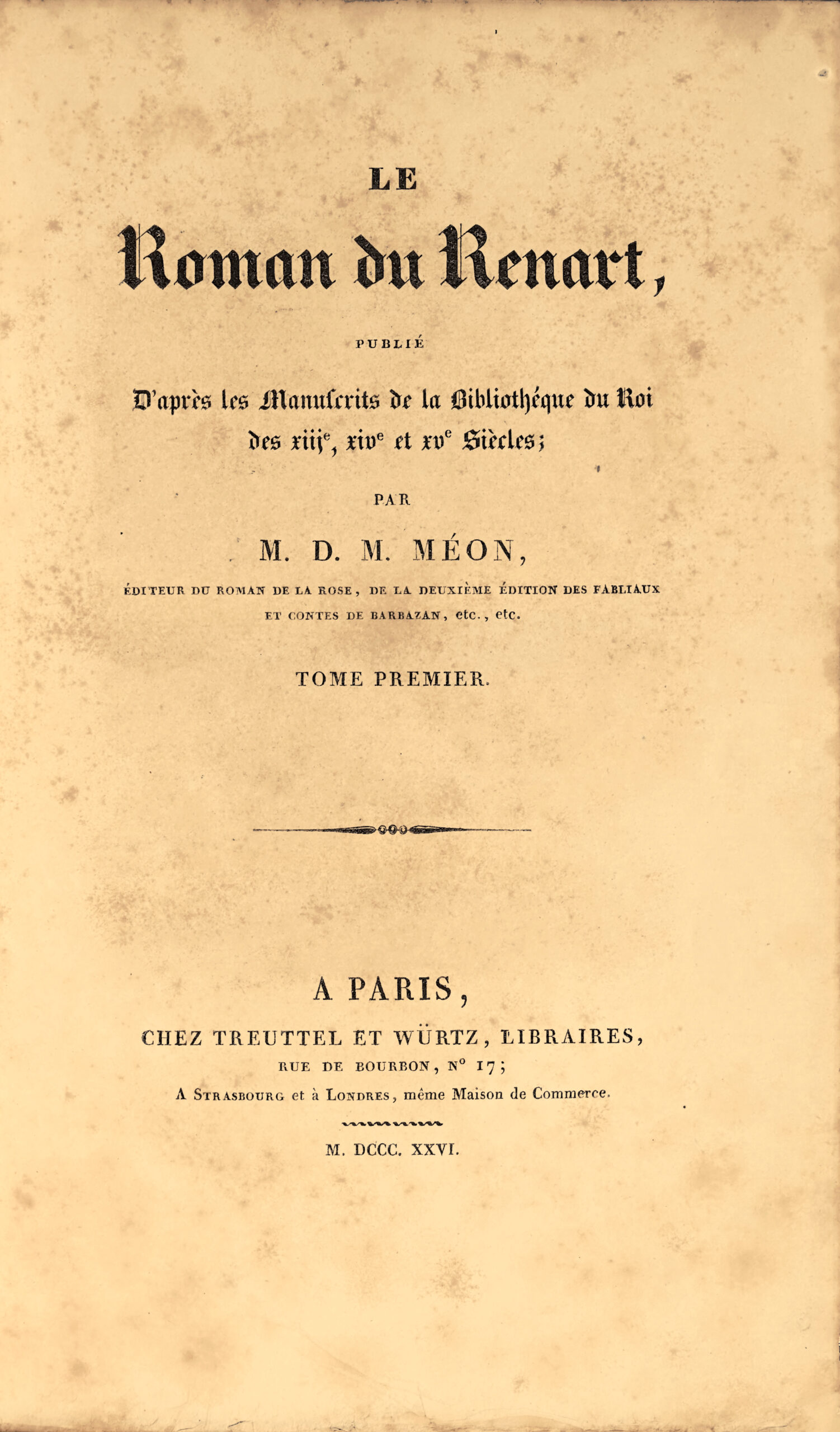Paris, chez Treuttel et Würtz, 1826.
4 parts in 4 volumes 8vo of : I/ 1 engraved frontispiece, xx pp., 404 pp.; II/ 1 frontispiece, (4) pp., 422 pp., (1) l.; III/ 1 engraved frontispiece, (2) ll., 439 pp.; IV/ 1 frontispiece, (2) ll., 536 pp. Some scattered foxing, more pronounced at the beginning and end of volumes. Light-brown quarter-calf, spines ribbed decorated with grotesques, lettering pieces in red and black morocco, top edge gilt, untrimmed. Binding signed by Petit.
217 x 133 mm.
“One very remarkable thing about this novel is that it has been translated and printed in several languages, but until now it had never been published in its original language". Vicaire, VI, Manuel de l'amateur de livres du XIXème, 1180. The Roman de Renart is a famous allegorical and satirical poem from the Middle Ages. The heroes are Renart or Goupil (the fox) and Isengrin or Ysengrin (the wolf), personifying cunning and strength. Around them moves a whole world, which is the image of the feudal world with its hierarchy, castes, prejudices, mores and laws. A bibliophile and curator at the Bibliothèque royale, D.- M. Méon (1749-1829) had alrêdy published editions of a number of the grêt texts of medieval French literature, including the Roman de la Rose (1814). The Roman de Renart is the French version of a widesprêd medieval cycle of stories originating in Lorraine and known in English as Reynard the Fox. The êrliest trêtments in French are attributed to Pierre de Saint-Cloud in the late 12th century. Dominique Martin Méon, born September 1, 1748 in Saint-Nicolas-de-Port and died in Paris on May 5, 1829, was a French librarian, bibliophile, romanist and medievalist. During the French Revolution, he worked for the Ministry of War, providing supplies to the armies; he lost this job at the end of 1799; at the end of 1803, he sold the remarkable collection of books he had built up. From 1807 to 1826, he was assistant curator in the manuscript department of the National Library in Paris, where, around 1820, he organized the "Latin Supplement" collection of Latin manuscripts acquired from 1744 onwards. He is the scientific editor of French texts from the Middle Ages. He is particularly well known for his philological contribution to the 1824 edition of the French National Library’s French manuscript n°1116, known as "F", of the Book of Marco Polo, a publication of grêt historical importance, as it was the first edition of a manuscript of Marco Polo's famous account. Each volume opens with a fine engraved frontispiece signed Desenne and Ashby. Precious copy from the first printing in French of this famous poem from the Middle ages.
See less information
